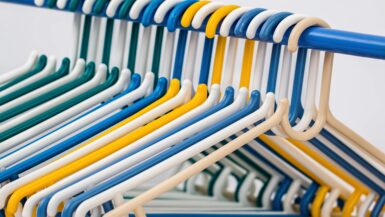In today’s world, the concerning issue of plastic pollution has garnered significant attention. The detrimental effects of plastics on our ecosystem, particularly microplastics, cannot be underestimated. In this article, we will delve deep into the alarming impact of microplastics on both our health and the environment. By discussing the sources and pathways of microplastics, we aim to raise awareness of the potential risks associated with their ubiquitous presence. Furthermore, the article will shed light on the latest scientific findings and potential solutions that could help mitigate this growing problem. Join us as we explore the complex and pressing issue of microplastics and their implications on our well-being and the world we inhabit.
Unveiling the Sources of Microplastics in Our Daily Lives
Microplastics, tiny particles of plastic measuring less than 5 millimeters in size, have become an integral part of our daily lives. They are found in various sources, infiltrating our food chain, water systems, and even the air we breathe. The presence of microplastics in our surroundings poses a significant threat to human health and the environment. In this subsection, we will explore some of the most common sources of microplastics in our everyday lives and highlight the importance of addressing this pervasive issue.
Personal Care Products and Cosmetics
One of the primary sources of microplastics is personal care products and cosmetics. Several items, such as facial scrubs, toothpaste, and shower gels, contain tiny plastic particles known as microbeads. These microbeads are designed to provide exfoliation and texture to the products. Unfortunately, they are not biodegradable and end up polluting our water systems when washed down the drain.
Laundry and Synthetic Fabrics
Another significant contributor to microplastic pollution is the process of washing synthetic fabrics, such as polyester, nylon, and acrylic. During laundering, these fabrics release microscopic plastic fibers that eventually make their way into our water systems. As a result, numerous aquatic species ingest these fibers, causing harm to their health and infiltrating the food chain.
Plastic Packaging and Single-Use Items
Everyday plastic items, such as shopping bags, straws, and disposable cutlery, are a major source of microplastic pollution. As these items break down over time, they fragment into smaller and smaller pieces, eventually becoming microplastics. The disposal of plastic waste in landfills and the environment leads to the widespread distribution of these hazardous particles.
Tire Wear and Road Markings
Surprisingly, the wear and tear of vehicle tires is a significant source of microplastics. As tires wear down, they release small particles that accumulate on roads and are washed into waterways during rainfall. Similarly, road markings made from thermoplastic materials also contribute to the production of microplastics as they degrade over time.
Marine Debris and Fishing Gear
Marine debris, including discarded fishing nets, lines, and other equipment, is another notable source of microplastics in our environment. As these items break down, they release microplastics that are ingested by marine life and eventually make their way back into our food chain.
Understanding the various sources of microplastics in our daily lives is crucial in addressing this environmental and health crisis. By acknowledging the role we play in contributing to microplastic pollution, we can take steps towards reducing our plastic consumption and seeking sustainable alternatives. This, in turn, will help protect our health and the environment for future generations.
The Hidden Dangers of Microplastics on Human Health
As the prevalence of microplastics continues to rise, so do the concerns about their potential impact on human health. The presence of these minuscule particles in our food, water, and air raises questions about the long-term consequences of microplastic exposure. In this subsection, we will delve into recent studies and findings that reveal the potential hazards associated with microplastics and their effects on our well-being.
Microplastics in Our Food Chain
Microplastics have infiltrated every level of the food chain – from the smallest plankton to the largest marine mammals. As a result, humans are also at risk of ingesting these particles through the consumption of contaminated seafood and other food products. Research indicates that microplastics can accumulate in the tissues of fish and shellfish, which may eventually be consumed by humans. The implications of long-term exposure to microplastics through our diet are not yet fully understood, but the potential for harm is undeniable.
The Air We Breathe
Alarmingly, microplastics are not only present in our food and water, but also in the very air we breathe. Recent studies have revealed that microplastic particles can become airborne, allowing them to be inhaled and potentially enter our respiratory system. The health consequences of inhaling microplastics are still being explored, but preliminary findings suggest that they can cause inflammation and other respiratory issues.
Endocrine Disruption and Toxicity
Some microplastics can release harmful chemicals, such as bisphenol A (BPA) and phthalates, which are known endocrine disruptors. These chemicals can interfere with our hormonal systems and have been linked to various health issues, including reproductive problems, developmental disorders, and even cancer. Furthermore, microplastics can also absorb and carry other toxic substances, such as pesticides and heavy metals, which may pose additional health risks when ingested or inhaled.
Immune System and Inflammatory Response
Emerging research suggests that exposure to microplastics may have an impact on our immune system. Studies have shown that microplastics can cause an inflammatory response in human cells, potentially leading to chronic inflammation and related health problems. However, more research is needed to fully understand the mechanisms and implications of microplastic-induced inflammation in humans.
As scientific investigations into the effects of microplastics on human health continue, it is crucial that we take action to reduce our exposure to these hazardous particles. By adopting a more sustainable and plastic-free lifestyle, we can help protect our health and the environment from the insidious threat of microplastics.
Microplastics and Their Devastating Effects on Marine Ecosystems
The pervasive presence of microplastics in our environment has led to significant consequences for marine ecosystems. These tiny particles have infiltrated every level of the aquatic food chain, posing a grave threat to the survival and health of countless marine species. In this subsection, we will explore the various ways in which microplastics impact marine life and the intricate balance of aquatic ecosystems.
Microplastic Ingestion and Physical Harm
One of the most immediate and visible effects of microplastics on marine life is physical harm caused by ingestion. Marine animals, including fish, birds, and mammals, often mistake microplastics for food due to their small size and colorful appearance. Once ingested, microplastics can cause internal injuries, blockages in the digestive system, and even starvation, as the animals feel falsely satiated and stop eating.
Disruption of Nutrient Cycling and Food Webs
Microplastics not only harm individual organisms but also disrupt the delicate balance of marine food webs and nutrient cycling. As microplastics accumulate in the bodies of marine creatures, they can impact the natural flow of energy and nutrients between different trophic levels. This disruption can lead to changes in population dynamics, species interactions, and overall ecosystem functioning.
Transport of Invasive Species and Pathogens
Another lesser-known consequence of microplastic pollution in marine ecosystems is the facilitation of the spread of invasive species and pathogens. Microplastics can act as vectors for the transport of alien species, such as algae and microorganisms, that can colonize new environments and cause significant ecological disturbances. Moreover, microplastics can harbor harmful pathogens, exposing marine organisms to increased disease risk.
Chemical Contamination and Bioaccumulation
As previously mentioned, microplastics can release toxic chemicals and absorb various pollutants from their surroundings. When ingested by marine organisms, these chemicals can accumulate in their tissues, a process known as bioaccumulation. Over time, these toxins can biomagnify, or increase in concentration, as they move up the food chain. This poses a significant risk to top predators, including humans, who may consume contaminated seafood.
Alteration of Marine Habitats
Finally, microplastics can also alter the physical properties of marine habitats, impacting the way in which marine organisms interact with their environment. For example, microplastics can change the composition and structure of sediments, affecting the living conditions of benthic organisms that dwell on the ocean floor. Additionally, the presence of microplastics in the water column can impact the behavior and distribution of marine species, with potential consequences for ecosystem dynamics.
The devastating effects of microplastics on marine ecosystems are a stark reminder of the urgent need to address this global issue. By reducing our reliance on plastic and seeking sustainable alternatives, we can help protect the health and resilience of our oceans and the countless species that call them home.
Strategies for Reducing Microplastic Pollution in Our Environment
As we’ve explored the devastating effects of microplastics on human health and the environment, it’s essential to consider the strategies we can adopt to reduce microplastic pollution. By implementing these strategies, we can collectively work towards a cleaner, healthier, and more sustainable future. In this subsection, we will discuss various approaches to minimize microplastic pollution, ranging from individual actions to broader policy changes.
Embracing a Plastic-Free Lifestyle
One of the most effective strategies for reducing microplastic pollution begins with the choices we make as consumers. By opting for plastic-free and eco-friendly alternatives in our daily lives, we can significantly decrease our plastic footprint. Some ways to achieve this include using reusable bags, bottles, and containers, avoiding single-use plastics, and choosing products without plastic packaging. Additionally, selecting personal care products and cosmetics that are free of microbeads can help diminish the release of microplastics into our water systems.
Proper Disposal and Recycling of Plastics
Ensuring proper disposal and recycling of plastic waste is another critical step in minimizing microplastic pollution. By segregating waste and recycling plastics whenever possible, we can reduce the amount of plastic entering landfills and the environment. It’s also essential to dispose of fishing gear and other marine debris responsibly to prevent further contamination of our oceans.
Supporting Innovation in Biodegradable Materials
Encouraging the development and use of biodegradable materials can help reduce the persistence of plastics in our environment. Supporting companies and initiatives that focus on creating eco-friendly alternatives to traditional plastics can aid in the transition towards a more sustainable future. This can include investing in biodegradable packaging, compostable materials, and innovative solutions to replace plastic products.
Implementing Effective Policies and Regulations
Governments and policymakers play a crucial role in addressing the issue of microplastic pollution. By implementing strict regulations on the production, use, and disposal of plastics, we can mitigate the release of microplastics into our environment. This includes policies that ban or restrict the use of microbeads in personal care products, enforce plastic reduction targets for industries, and promote recycling initiatives.
Increasing Public Awareness and Education
Raising public awareness about the harmful effects of microplastics on our health and environment is essential in driving change. By educating people about the sources of microplastics and their consequences, we can encourage more sustainable choices and behaviors. This can be achieved through campaigns, educational programs, and community engagement initiatives that highlight the importance of reducing microplastic pollution.
Fostering Collaboration and Global Action
Lastly, addressing the issue of microplastic pollution requires concerted efforts from individuals, organizations, and governments across the globe. By fostering collaboration and international partnerships, we can work together to develop solutions, share resources, and implement effective strategies to tackle this pressing concern.
In summary, reducing microplastic pollution in our environment involves a multifaceted approach that encompasses individual actions, technological innovation, policy changes, education, and global cooperation. By committing to these strategies, we can make a significant impact on the health of our planet and its inhabitants.
Global Initiatives and Regulations to Combat Microplastic Contamination
As the detrimental effects of microplastics on our health and environment become increasingly evident, numerous global initiatives and regulations have emerged to combat microplastic contamination. These efforts aim to mitigate the release of microplastics into our environment, promote sustainable alternatives, and foster international cooperation in addressing this pressing issue. In this subsection, we will examine some of the most notable initiatives and regulations that have been implemented worldwide and discuss their significance in tackling the microplastic problem.
The United Nations Environment Programme (UNEP) and the #CleanSeas Campaign
The United Nations Environment Programme (UNEP) has taken a leading role in addressing the issue of microplastic pollution, launching the #CleanSeas campaign in 2017. This global initiative aims to raise awareness about the harmful effects of marine plastic debris, including microplastics, and encourages governments, businesses, and individuals to take action in reducing plastic waste. The campaign has resulted in numerous commitments from countries worldwide, with many implementing policies and measures to combat plastic pollution and promote sustainable alternatives.
European Union (EU) Strategy for Plastics and the Single-Use Plastics Directive
In 2018, the European Union (EU) adopted an ambitious strategy for plastics, which seeks to address the various challenges posed by plastic pollution, including microplastic contamination. The strategy focuses on improving the design, production, use, and disposal of plastic products, promoting a circular economy approach, and fostering investment in research and innovation. As part of this strategy, the EU also introduced the Single-Use Plastics Directive in 2019, which aims to significantly reduce the consumption of single-use plastic items, such as straws, cutlery, and cotton buds, which are major contributors to microplastic pollution.
The United States Microbead-Free Waters Act
In response to the growing concern over microbeads in personal care products, the United States enacted the Microbead-Free Waters Act in 2015. This groundbreaking legislation bans the manufacture and sale of rinse-off cosmetics containing plastic microbeads, effectively addressing one of the primary sources of microplastic contamination in aquatic environments. Since the implementation of the Microbead-Free Waters Act, several other countries, including Canada, the United Kingdom, and Australia, have followed suit, introducing similar bans on microbeads in personal care products.
The Global Plastics Treaty and International Cooperation
Recognizing the need for a global approach to combating microplastic pollution, several countries and organizations have called for the establishment of a comprehensive international treaty on plastics. While such a treaty is yet to be finalized, the idea has gained momentum in recent years, with various stakeholders endorsing the concept and working towards its development. A global plastics treaty could facilitate international cooperation, establish harmonized standards and targets, and promote the sharing of best practices and resources in addressing the microplastic problem.
Corporate Commitments and Industry-Led Initiatives
In addition to government-led initiatives and regulations, numerous corporations and industries have taken steps to address the issue of microplastic pollution. Companies worldwide are increasingly committing to reducing plastic waste, incorporating sustainable materials into their products, and investing in research and development to find innovative solutions to the microplastic problem. Industry-led initiatives, such as the New Plastics Economy Global Commitment and the Ocean Plastics Leadership Network, are also playing a crucial role in fostering collaboration and driving change in the private sector.
The implementation of these global initiatives and regulations demonstrates the growing recognition of the urgent need to address microplastic contamination. By supporting and advancing these efforts, we can collectively work towards a future where the impact of microplastics on our health and environment is significantly minimized.





Leave a reply